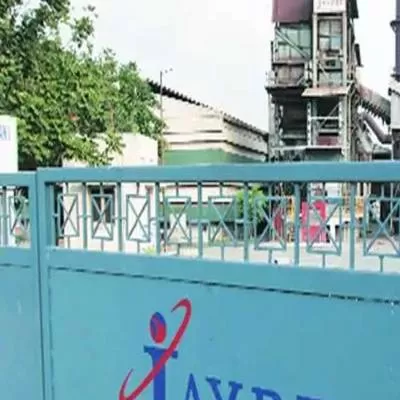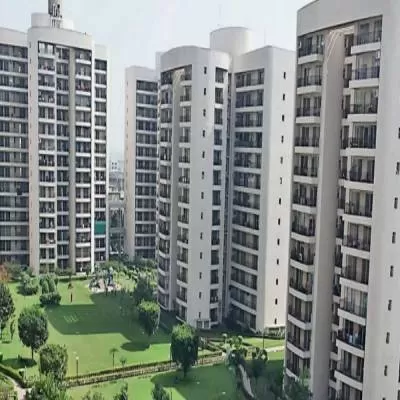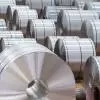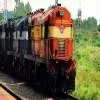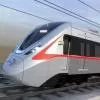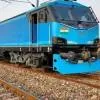- Home
- Real Estate
- How tunnel form technology is playing a key role in offering promised quality and meeting timelines in the real-estate sector!

How tunnel form technology is playing a key role in offering promised quality and meeting timelines in the real-estate sector!
Demand drivers
To be on a par with the current trends, it becomes imperative to develop formwork systems that are quick and productive in the long run, are easy to move or erect, and can be reused. Tunnel form technology is increasingly gaining popularity in this given environment and suits the evolved demands of construction. A form invented over 50 years ago, it creates a formwork system that enables a contractor to cast three side walls and slabs in one operation, in a single cycle. This not only improves speed, quality and accuracy of production but results in construction at a lower cost.
Hidden properties
Made entirely of solid steel, the tunnel form is designed to last up to 1,000 floors of a building and can last for the completion of many projects with only small modular adaptations needed from project to project. As opposed to the traditional production cycle of 20 days, the tunnel form construction technique has a considerably short production cycle of an average of three days. To put this in better perspective, with this technology, the entire duration of a project is on fast track. Hence, a multi-storeyed structure can be completed in as short a time as a month. We are successfully using this technology in Mantri Serenity and Mantri Energia in Bengaluru, where we are able to achieve an average slab cycle of less than five days; we are pleased with this result.
Developed at least five decades ago, the tunnel form construction technique produces high-quality monolithic structures. By design, it eliminates the use of any subsequent wet trades and allows the contractor to cast walls and slabs in one operation in a daily cycle. Highly systematic and an earthquake endurance-proven technology, tunnel form construction provides an ideal solution to the critical problem of sound transmission, giving a sound reduction of 50 decibels.
The smooth surfaces created on the walls and slabs do not need any additional finishing such as plaster. The accelerated production limits the adverse effects of climatic conditions on productivity. To summarise, this technique increases productivity, minimising hindrances like excessive time consumption and cost of construction.
The benefits
In the construction industry, anything that can speed up construction is a big advantage as the interest burden is significantly reduced on both the developer and customer. Also, in terms of performance, the technology is much less labour-intensive than conventional construction. The margin for error and subsequent consequences are largely mitigated through this. It helps achieve a smooth and level floor and wall surface, which helps in activities such as flooring and plastering as well. Despite the investment cost in adopting the technique, its beauty lies in it being a replicable process, which helps in significant cost reduction. And, as this is adopted by the larger base of people working in construction projects, the skills in relation to this technology will also become a norm.
The shortcomings
One large shortcoming of this technology is the need for high-grade concrete in a large quantity within short bursts of time. In Mantri Energia in Bengaluru, we have partnered with UltraTech to solve this problem. The only other shortcoming we are facing is that the finishing of the building cannot keep pace with the structure completion. There are new products coming in the market that allow us to reduce this duration significantly. But overall, delivery time to customer remains unchanged.
Safety first!
The technology's integral working platform and protection system also lessen the threat of accidents. The repetitive and predictable nature of the task involved creates a familiar environment while operating. The minimal requirement for tools and equipment when moving the tunnel form further reduces the risk of accidents on site. Along with the above mentioned safety factors, sustainability is an important aspect as well. The casting of slabs on site and local availability of ready-mixed concrete supplies reduce the impact of transportation. Timely deliveries and near zero-wastage produce make this an overall systematic site with associated cost-savings and safety benefits.
An evolving technique
With vast improvements in architectural design, global rise in labour costs and construction engineering and technological advancements, tunnel form has evolved extensively. It simplifies construction projects, as the manner in which the technology is used is a repetitive and orderly process, thereby accelerating the method of operation. There is no compromise on quality despite the speed of construction; and design-wise, its quality of being flexible in nature gives ample freedom and liberty in designing and constructing.
In the present day, Indian developers have also come to understand the benefits of this form of construction. The technology is most suited for areas that are densely populated and have limited land for development.
- SHRIYAL SETHUMADHAVAN
Share your views on this article at feedback@ConstructionWorld.in
Over the past few years, the construction industry has slowly but increasingly embraced the processes and technology innovations that can augment both profitability and performance. Further, in the current real-estate scenario, with announcements on Housing for All by 2022 and RERA, it has become even more important for the sector to not deviate from commitments to specifications and timelines. Against this backdrop, technology has taken centre-stage, as it has a crucial role to play in timely project completion. In this regard, Pratik Mantri, Director, Mantri Developers, shares more on the relevance of tunnel form technology and its significance in modern-day construction. Demand drivers To be on a par with the current trends, it becomes imperative to develop formwork systems that are quick and productive in the long run, are easy to move or erect, and can be reused. Tunnel form technology is increasingly gaining popularity in this given environment and suits the evolved demands of construction. A form invented over 50 years ago, it creates a formwork system that enables a contractor to cast three side walls and slabs in one operation, in a single cycle. This not only improves speed, quality and accuracy of production but results in construction at a lower cost. Hidden properties Made entirely of solid steel, the tunnel form is designed to last up to 1,000 floors of a building and can last for the completion of many projects with only small modular adaptations needed from project to project. As opposed to the traditional production cycle of 20 days, the tunnel form construction technique has a considerably short production cycle of an average of three days. To put this in better perspective, with this technology, the entire duration of a project is on fast track. Hence, a multi-storeyed structure can be completed in as short a time as a month. We are successfully using this technology in Mantri Serenity and Mantri Energia in Bengaluru, where we are able to achieve an average slab cycle of less than five days; we are pleased with this result. Developed at least five decades ago, the tunnel form construction technique produces high-quality monolithic structures. By design, it eliminates the use of any subsequent wet trades and allows the contractor to cast walls and slabs in one operation in a daily cycle. Highly systematic and an earthquake endurance-proven technology, tunnel form construction provides an ideal solution to the critical problem of sound transmission, giving a sound reduction of 50 decibels. The smooth surfaces created on the walls and slabs do not need any additional finishing such as plaster. The accelerated production limits the adverse effects of climatic conditions on productivity. To summarise, this technique increases productivity, minimising hindrances like excessive time consumption and cost of construction. The benefits In the construction industry, anything that can speed up construction is a big advantage as the interest burden is significantly reduced on both the developer and customer. Also, in terms of performance, the technology is much less labour-intensive than conventional construction. The margin for error and subsequent consequences are largely mitigated through this. It helps achieve a smooth and level floor and wall surface, which helps in activities such as flooring and plastering as well. Despite the investment cost in adopting the technique, its beauty lies in it being a replicable process, which helps in significant cost reduction. And, as this is adopted by the larger base of people working in construction projects, the skills in relation to this technology will also become a norm. The shortcomings One large shortcoming of this technology is the need for high-grade concrete in a large quantity within short bursts of time. In Mantri Energia in Bengaluru, we have partnered with UltraTech to solve this problem. The only other shortcoming we are facing is that the finishing of the building cannot keep pace with the structure completion. There are new products coming in the market that allow us to reduce this duration significantly. But overall, delivery time to customer remains unchanged. Safety first! The technology's integral working platform and protection system also lessen the threat of accidents. The repetitive and predictable nature of the task involved creates a familiar environment while operating. The minimal requirement for tools and equipment when moving the tunnel form further reduces the risk of accidents on site. Along with the above mentioned safety factors, sustainability is an important aspect as well. The casting of slabs on site and local availability of ready-mixed concrete supplies reduce the impact of transportation. Timely deliveries and near zero-wastage produce make this an overall systematic site with associated cost-savings and safety benefits. An evolving technique With vast improvements in architectural design, global rise in labour costs and construction engineering and technological advancements, tunnel form has evolved extensively. It simplifies construction projects, as the manner in which the technology is used is a repetitive and orderly process, thereby accelerating the method of operation. There is no compromise on quality despite the speed of construction; and design-wise, its quality of being flexible in nature gives ample freedom and liberty in designing and constructing. In the present day, Indian developers have also come to understand the benefits of this form of construction. The technology is most suited for areas that are densely populated and have limited land for development. - SHRIYAL SETHUMADHAVAN Share your views on this article at feedback@ConstructionWorld.in




